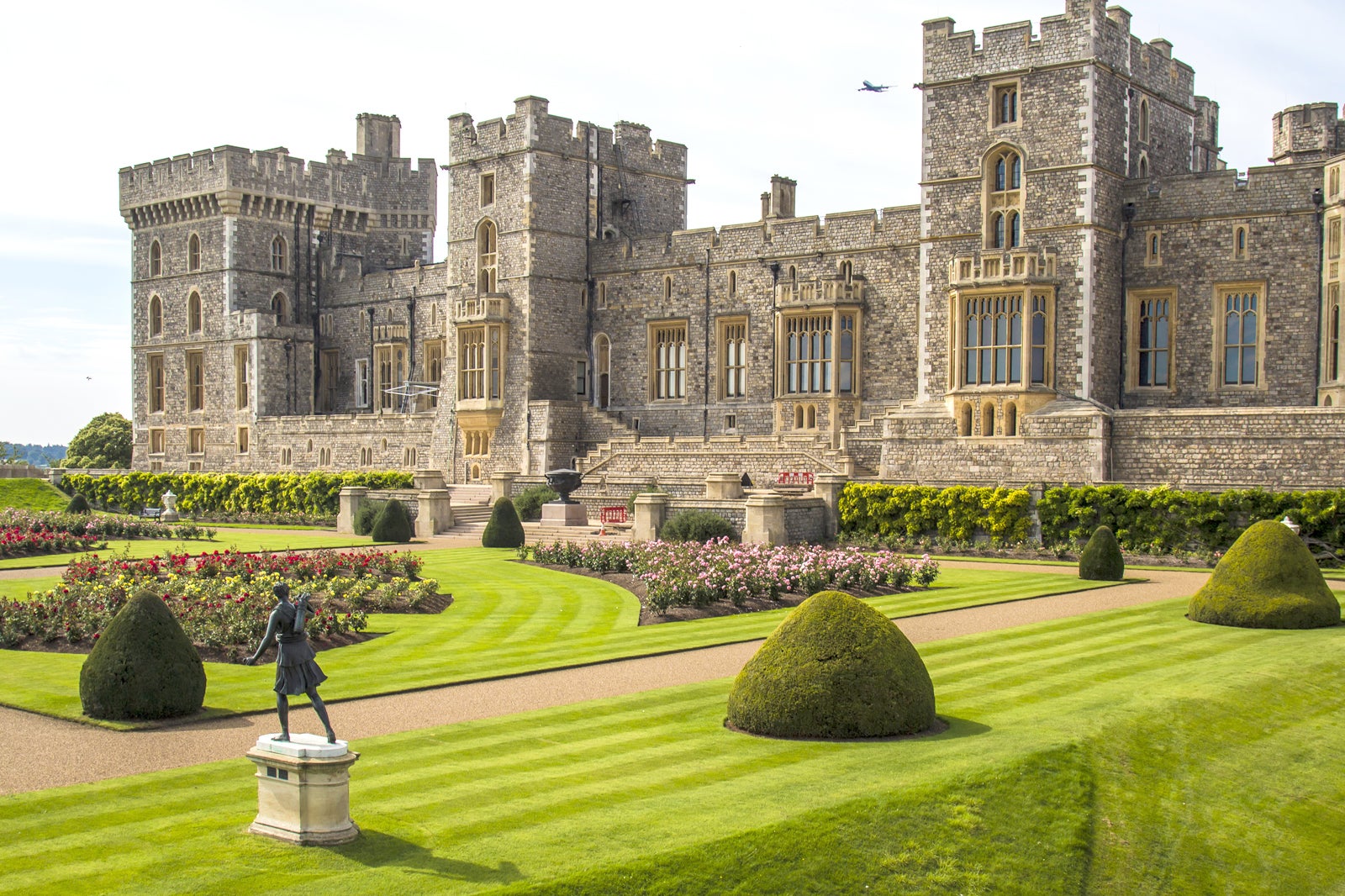Sometimes, a single name can open up a whole conversation about how we get our news and the people who bring it to us, and that is very much the case with Windsor Johnston. She is a name that pops up in a collection of varied thoughts and pieces of information, a reminder that behind every bit of news or a helpful tip, there is a person, a voice, a story. It's almost as if her presence in this text invites us to consider the many ways information travels and touches our lives.
This collection of text, in a way, paints a picture of how we share things, from big news events to tiny computer quirks, and how a person like Windsor Johnston plays a part in that bigger picture. It shows us how different bits of knowledge, whether it's about history, technology, or important announcements, all find their way to us through different channels. We see people asking for help, sharing historical tidbits, and confirming significant happenings, all of which really speaks to a shared human need to connect and to know things.
So, we'll spend some time exploring the presence of Windsor Johnston within this broader landscape of shared information, looking at how her name appears and what that suggests about the way we communicate and connect with one another, really. We'll also look at how her role as a reporter fits into the wider world of information exchange, considering the other kinds of details and questions that people put out into the world, too.
Who is Windsor Johnston and What Does Her Mention Tell Us?
When we encounter the name Windsor Johnston in this collection of thoughts and messages, it appears in a context that is quite significant. She is identified as an NPR reporter, and her name is linked to the confirmation of a major piece of news: the passing of Bob Edwards, a longtime national public radio host. This detail, very simply, places her within the world of news gathering and sharing, acting as a source that gives certainty to an important public announcement. It shows us that her role involves bringing factual information to a wide audience, which is a big responsibility, actually.
The text mentions her twice in relation to Bob Edwards' passing, once confirming it on a Saturday and again specifying the date as February 10. This repetition, in a way, underscores the importance of the news and the need for a reliable person to confirm it. A reporter like Windsor Johnston, you see, acts as a trusted conduit, helping to ensure that what people hear is accurate. This specific mention, therefore, highlights the human element in the spread of information, showing that even in a world full of facts and figures, there are individuals who stand behind the news we receive, offering a sense of reliability.
Her role, as described, involves a very important kind of communication. It is about taking a piece of information, checking its truthfulness, and then sharing it with others. This is a fundamental part of how societies learn about events, both big and small. The fact that she is an NPR reporter also suggests a connection to public service broadcasting, a medium often valued for its thoughtful and thorough approach to news. So, her name, even in this brief appearance, speaks volumes about the process of informing the public, and the trust placed in those who do it, too.
Personal Details and Bio Data of Windsor Johnston
| Role Mentioned | NPR Reporter |
| Key Action Noted | Confirmed the passing of Bob Edwards |
How Does Windsor Johnston Fit into the Flow of Information?
Windsor Johnston, as a reporter, sits at a point where information is gathered, checked, and then sent out to a wider audience. Her mention in this text, confirming a significant event, shows her as a key part of the information flow. She is someone who helps make sure that news, especially news about public figures, gets to people in a clear and certain way. This is quite different from some of the other types of information we see in the collection, yet it is all part of how people share what they know, or what they need to know, you know.
Consider the varied nature of the "My text" source itself. It holds everything from questions about computer settings to historical notes about people from centuries ago. In this mix, Windsor Johnston's confirmation of a death stands out as a piece of verified, public news. This contrast, in a way, helps us appreciate the different kinds of information people seek and share. Some information is personal, like asking about a PC's location, while other information, like the news she confirms, has a broader reach and impact on many people, naturally.
Her work, as a person who confirms news, is about bringing certainty to a situation. This is a very human need – to know what is true, especially when it involves someone well-known like Bob Edwards. It is a process that builds trust between the news provider and the audience. So, while other parts of the text show people asking for suggestions or trying to figure out computer problems, Windsor Johnston's presence represents the act of providing answers and reliable facts, which is a pretty vital role in any community, really.
What Other Kinds of Information Do We Share, Anyway?
Beyond the confirmed news that Windsor Johnston helps to deliver, our collection of text shows a whole range of other ways people share and seek information. A good portion of the text is made up of questions about computers and technology. This shows a very common human experience: facing a technical challenge and reaching out for help. It is about trying to make sense of something that is not working right, or learning how to use a tool more effectively, too.
For instance, someone asks about the "windows + r" command, which is a way to open a run box for typing commands. This is a very practical piece of knowledge, useful for anyone trying to manage their computer. Then there is the query about the "windows key," the one between "ctrl" and "alt." These are basic pieces of information that someone might need to simply operate their machine. It highlights how everyday tasks often require specific knowledge, and when that knowledge is missing, people turn to others for guidance, typically.
There are also more specific technical questions, like wanting to know what "rtkaudioservice64.exe" does when it runs at user login, or how to stop "windows input experience" from using too much memory and disk space. These are moments of frustration, where a computer user is looking for a solution to a problem that is directly affecting their daily work or leisure. It shows a human desire for efficiency and for things to simply work as they should, and the act of asking for help is a very natural response when facing these kinds of digital hiccups, in a way.
Why Do We Ask for Help with Our Computers, You Know?
When our computers act up, or we cannot figure out how to do something, the first thing many of us do is look for answers. The questions in this text about computer issues are a good example of this very human tendency. Someone is bothered by "windows input experience" eating up memory and disk space, and they want to know how to stop it. Another person has removed widgets from their taskbar but still finds them using disk space, which is a bit puzzling, naturally. These are real-world problems that affect how people use their devices.
The act of asking "Does anyone have any suggestions on whether i..." or "How can i stop the windows input experience" shows a reaching out to a community, to other people who might have faced similar issues or possess the specific knowledge needed. It is a form of shared problem-solving, where collective experience becomes a resource. This is a different kind of information exchange than a news report, but it is just as vital for the people involved. It is about making life a little easier, and about getting past those annoying technical roadblocks, too.
Even a seemingly simple question like "How i can install visio in my pc" leads to a helpful answer about Visio not being part of the standard Office suite and being sold separately. This exchange highlights the way people provide direct, practical advice to one another. It is a reminder that in the digital world, just like in the physical one, we often rely on the kindness and knowledge of others to get by. So, these tech questions, in their own way, reflect a very human need for practical solutions and for connection with others who can provide them, really.
Are Historical Accounts Just Another Form of Shared Knowledge?
Beyond the immediate news of today or the practicalities of computer use, our text also contains snippets of historical information, which is another fascinating way people share knowledge. We see mentions of "Windsor and 3 brothers taken in the 1800s," with an offer to "send to anyone interested." This is a very personal kind of sharing, often tied to family history or local records. It speaks to a human desire to connect with the past, to understand where we come from, and to share those discoveries with others who might care, too.
Then there are specific historical figures and dates: "Lydia Maynard Dorchester or Boston, MA, to Windsor, CT," and "John Moore made freeman, 1631 (deacon) John Moore b~1614 arrived on Mary and John 1630." These are precise details, often the result of careful research, and they are shared with the expectation that someone else might find them useful or interesting. It is a way of building a collective memory, piece by piece, allowing people to trace lines of ancestry or to simply learn about the lives of those who came before. This kind of sharing, in a way, helps to keep history alive and accessible for others.
The mention of "Walter Lee born 1630 in England and dying in Westfield in 1718, but he is married to a Hepzibah Baker and has a son named John," followed by "There is another Walter Lee from," shows the challenges and complexities of historical research. It is not always straightforward, and sometimes there are conflicting pieces of information. This reflects a very human effort to sort through details, to verify facts, and to make sense of incomplete records. Just like a reporter like Windsor Johnston confirms current events, historians work to confirm past ones, which is a pretty similar process, actually.
How Do People Piece Together Their Past, In a Way?
The act of sharing historical details, especially those from family trees or old records, is a very human pursuit. It is about building a picture of who we are by looking at who came before us. The offer to send information about "Windsor and 3 brothers" to anyone interested highlights a community aspect of historical research. People do not usually keep these discoveries to themselves; they want to share them with others who might have a connection or a similar interest. This is how family histories grow and become more complete, you know.
The specific details about John Moore or Walter Lee show the precision that goes into this kind of work. Dates of birth, places of residence, and family connections are all important parts of the puzzle. The note about "another Walter Lee" also points to the common experience of encountering confusing or duplicate information when researching the past. This requires careful checking and cross-referencing, much like a reporter would verify sources for a news story. It is a testament to the human desire for accuracy, even when looking back in time, typically.
So, these historical snippets, though seemingly very different from a news report confirmed by Windsor Johnston or a question about computer settings, are all part of the larger human effort to gather, share, and make sense of information. Whether it is about a famous person who passed away, a computer problem, or an ancestor from centuries ago, the underlying drive is the same: to understand our world and to share that understanding with others. It is about building connections through shared knowledge, in some respects.
What About the Bigger Stories that Shape Our World?
Our collection of text also touches upon global events and broader societal discussions, showing yet another layer of information that people consume and react to. The mention of "Iran launched multiple deadly waves of missiles and drones toward Israel" is a clear example of major international news. These are the kinds of stories that affect many people and often lead to widespread discussion and concern. Like the news confirmed by Windsor Johnston, these events are reported to a wide audience, shaping our understanding of the world around us, naturally.
Then there is the note about "Americans attended 'no kings' protests across the country to denounce President Donald Trump’s policies as the president presided over a military parade in Washington, DC." This points to political and social movements, showing how people engage with their governments and express their views. These are stories about collective action and public opinion, reflecting the dynamic nature of society. They are pieces of information that inform citizens and often prompt further thought or discussion, too.
Even something like "Mavis Johnston, pictured here in this colorized black and white photo, witnessed travel's 1950s boom years, Click through the gallery to view her experiences," falls into this category of shared information. It is not breaking news, but it is a historical look at a cultural phenomenon through a personal lens. It is about sharing experiences and observations that help us understand different periods of time and how life was lived. So, these various news items, from global conflicts to personal histories, all contribute to the vast pool of information that people interact with every day, really.
How Do Different Pieces of Information Come Together, Really?
When we look at all the different kinds of information present in this text – from Windsor Johnston confirming a news event, to people asking about computer fixes, to historical family details, and then to global headlines – we see a clear picture of how varied our information needs and interests are. It shows that people are constantly seeking, sharing, and making sense of a vast amount of data. This is a very human process, driven by curiosity, necessity, and a desire to connect with others, too.
The thread that connects all these disparate pieces, in a way, is the act of communication itself. Whether it is a formal news report, a casual query in an online forum, or a shared piece of family history, each bit of text represents an interaction. It is about one person putting information out there, and another person receiving or seeking it. This constant flow of details, questions, and answers forms the fabric of our shared human experience, shaping how we learn, how we solve problems, and how we understand our place in the world, in some respects.
So, while Windsor Johnston's role as a reporter is about delivering confirmed news to a wide audience, her presence in this text serves as a reminder that she is just one part of a much larger system of information exchange. This system includes everyone who asks a question about their computer, everyone who shares a historical tidbit, and everyone who reads about a global event. It is a constantly moving and changing landscape of shared knowledge, where every piece, big or small, plays a part in connecting people and helping them navigate their lives, basically.



Detail Author:
- Name : Ms. Leatha Swift MD
- Username : henriette98
- Email : kassulke.victor@hotmail.com
- Birthdate : 1984-08-07
- Address : 5264 Denesik Manors South Lizethtown, CO 82085-1101
- Phone : +19419555581
- Company : Roberts-Murazik
- Job : Pipelaying Fitter
- Bio : Nihil maxime consequatur consequatur rerum. Nisi repudiandae corporis atque officia veniam quidem sit. Repudiandae fugit est magni earum excepturi aut similique. Officiis omnis vitae et aut.
Socials
facebook:
- url : https://facebook.com/cstokes
- username : cstokes
- bio : Aut illum qui tempora. Sequi sunt dolorem quaerat est. Enim dolore eius ex.
- followers : 5850
- following : 927
instagram:
- url : https://instagram.com/stokesc
- username : stokesc
- bio : Corporis reprehenderit et ullam itaque aut quis dolores aspernatur. Placeat error rerum id.
- followers : 5755
- following : 2340
tiktok:
- url : https://tiktok.com/@clementina_stokes
- username : clementina_stokes
- bio : Aut earum voluptatem aut est consequatur molestiae repudiandae.
- followers : 6450
- following : 1512

